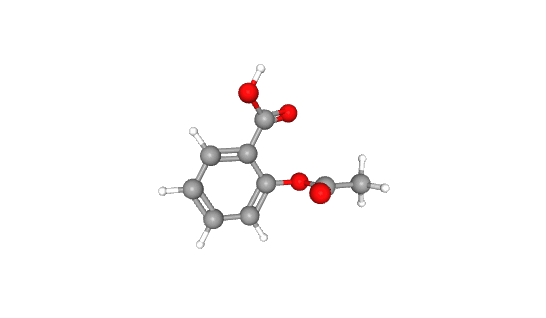
Lipinski's rule of 5
Assess drug-likeness using Lipinski's rule of 5 criteria for oral bioavailability. Evaluates molecular weight, LogP, hydrogen bonding, and other drug-like properties.
Model overview: Lipinski's rule of 5
What is Lipinski's Rule of Five?
Lipinski's Rule of Five (Ro5) is a set of guidelines in medicinal chemistry used to predict the likelihood of a chemical compound being an orally active drug. Developed by Christopher A. Lipinski at Pfizer in 1997, the rule provides four physicochemical criteria that correlate with oral bioavailability.
The rule emerged from statistical analysis of 2,245 drugs from the World Drug Index that had successfully reached the market through oral administration. Published in Advanced Drug Delivery Reviews, it has become one of the most cited papers in pharmaceutical research.
The name derives from the observation that three of the four numerical criteria are multiples of five, making the rule easily memorable for drug discovery applications.
The four criteria
The rule states that poor absorption or permeation is more likely when a compound violates more than one of the following criteria:
- Molecular weight ≤ 500 Daltons: This threshold reflects the upper size limit for efficient passive membrane permeation. Larger compounds face increasing difficulty crossing biological membranes.
- LogP ≤ 5: The octanol-water partition coefficient measures lipophilicity. Values above 5 indicate excessive lipophilicity, potentially leading to poor aqueous solubility and reduced bioavailability.
- Hydrogen bond donors ≤ 5: Counted as the total number of nitrogen-hydrogen (N-H) and oxygen-hydrogen (O-H) bonds. Excessive hydrogen bonding impairs membrane permeability.
- Hydrogen bond acceptors ≤ 10: Includes all nitrogen and oxygen atoms capable of accepting hydrogen bonds. The limit reflects the energetic cost of desolvation during membrane transit.
Compliance and violations
The original rule states that an orally active drug should violate no more than one of the four criteria. This allows for some flexibility while maintaining predictive value for oral bioavailability.
Modern applications often use quantitative scoring systems rather than binary pass/fail assessments, recognizing that compounds near threshold boundaries may retain therapeutic potential.
Historical development
Lipinski developed these guidelines after observing that many compounds from Pfizer's discovery programs were failing during clinical development. Analysis of compounds that successfully progressed from Phase I to Phase II trials revealed consistent physicochemical patterns correlating with oral bioavailability.
The rule was validated using 2,245 orally administered drugs from the World Drug Index. Subsequent studies have confirmed its continued relevance, though some parameters have evolved with modern drug development practices.
Contemporary evolution
Recent analysis indicates that approved drug properties have evolved since 1997. Average molecular weights now commonly exceed 500 Daltons, with some researchers suggesting updated thresholds around 600 Daltons better reflect current practice. This evolution reflects advances in formulation technology and improved understanding of absorption mechanisms.
The rule remains influential but has attracted both support and criticism within the medicinal chemistry community. Critics argue that rigid adherence may limit chemical diversity, while supporters view it as providing valuable guidance when applied as guidelines rather than absolute restrictions.
Related rules
Several extensions and variants have been developed:
Veber's Rule: Focuses on molecular flexibility, requiring ≤10 rotatable bonds and polar surface area ≤140 Ų.
Ghose Filter: Specifies logP between -0.4 and +5.6, molecular weight 160-480 Da, and 20-70 total atoms.
Rule of Three: Designed for lead compounds with more stringent criteria (MW ≤300, logP ≤3, ≤3 hydrogen bond donors/acceptors).
REOS Filter: Combines functional group filters with property-based criteria and formal charge constraints.
Mechanistic basis
The rule reflects biophysical principles of oral drug absorption:
Solubility-permeability balance: Oral drugs require adequate aqueous solubility for dissolution and sufficient lipophilicity for membrane permeation. The molecular weight and logP criteria balance these competing requirements.
Hydrogen bonding: Excessive hydrogen bonding increases desolvation energy required for membrane transit, creating absorption barriers.
Molecular size: The 500 Da threshold approximates the upper limit for efficient passive diffusion through biological membranes.
Applications
The rule is widely used in pharmaceutical research for:
- Compound library design: Filtering molecules with favorable pharmacokinetic properties
- Lead optimization: Guiding structural modifications while maintaining drug-like properties
- Virtual screening: Defining "drug-like" chemical space for computational searches
- Fragment-based discovery: The Rule of Three guides fragment library design
Limitations and exceptions
Several classes of successful drugs violate the rule:
Natural products: Many natural product-derived drugs (e.g., cyclosporine, erythromycin) violate Ro5 criteria but achieve bioavailability through active transport or specialized pathways.
Transporter substrates: The rule excludes compounds transported by active mechanisms, which can facilitate absorption of larger, more polar molecules.
Modern delivery systems: Prodrugs, nanoformulations, and permeation enhancers can overcome traditional limitations.
Protein-protein interaction inhibitors: These often require properties exceeding Ro5 boundaries, leading to "beyond Rule of Five" (bRo5) drug development.
Computational implementation
Modern analysis uses cheminformatics algorithms to calculate molecular descriptors:
Molecular weight: Calculated by summing atomic masses from molecular formula or SMILES notation.
LogP prediction: Computational models (XLogP, ALogP) estimate partition coefficients from molecular structure.
Hydrogen bond counting: Algorithms identify donor groups (N-H, O-H) and acceptor atoms (N, O) based on connectivity patterns.
Structure parsing: SMILES strings are processed to extract structural features and calculate properties.
Modern assessment
Contemporary drug discovery has evolved beyond binary compliance toward quantitative scoring systems like QED (Quantitative Estimate of Drug-likeness), which provide graduated assessments rather than absolute cutoffs.
Machine learning approaches now integrate multiple descriptors and ADMET predictions to provide more nuanced drug-likeness assessments, building upon Ro5 foundations while addressing limitations.
Impact
The rule initiated a paradigm shift in medicinal chemistry, prioritizing pharmacokinetic properties early in discovery rather than focusing solely on potency. This has contributed to reduced late-stage clinical failures due to poor drug-like properties.
Its simplicity and memorability have made it widely accessible across pharmaceutical research disciplines, influencing compound prioritization decisions industry-wide.
Cost
Calculating Lipinski Rule of Five parameters with ProteinIQ costs only 1 credit per molecule, regardless of the number of parameters analyzed. This makes it highly cost-effective for screening large compound libraries or conducting systematic drug-likeness assessments across diverse chemical series.